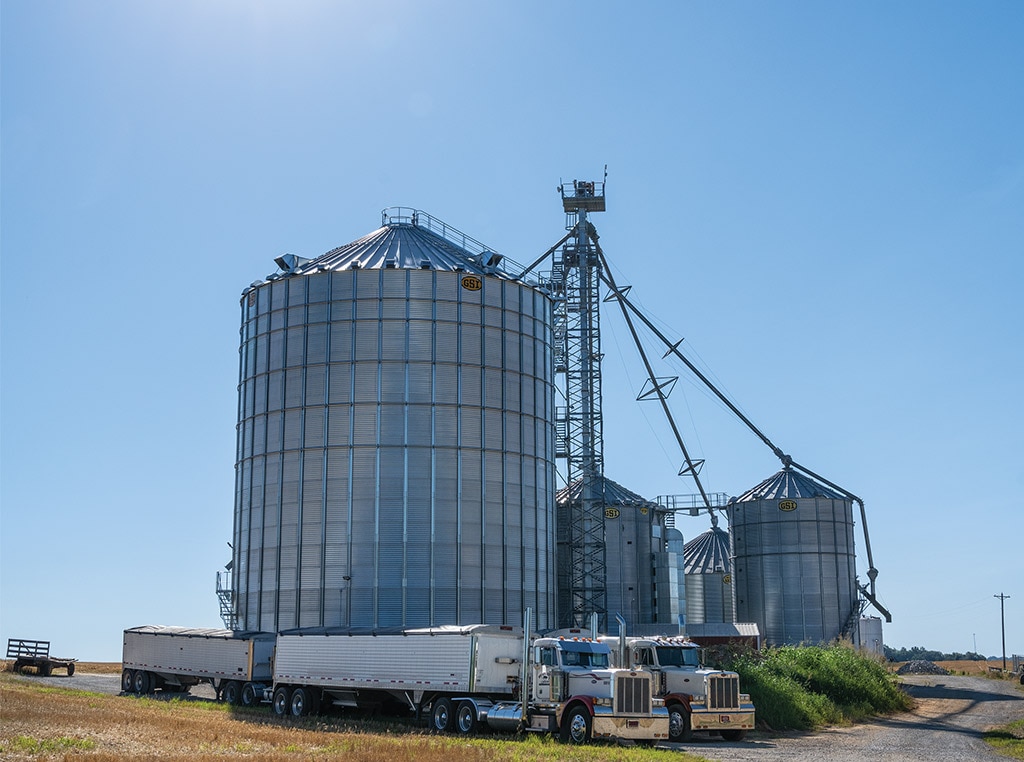Agriculture, Livestock/Poultry April 01, 2023
Barn with a View
.
3-D cameras provide intel on cow health and feeding.
Søren Rønbjerg's cows may be some of the most photographed animals in the world. It's not that paparazzi lurk in the shadows or that the 350 VikingRed cows are particularly dazzling (though their herd production average of 11,600 kg/25,573 lb per cow is attractive). Dozens of cameras are pointed straight down at the cows eating piles of total mixed ration in Rønbjerg's barn near Give, Denmark, to track feed consumption, cow by cow. The cameras are the heart of CFIT—VikingGenetics' Cattle Feed Intake System.
The cameras are Microsoft Connect units, the 3-D cameras found in Xbox gaming units. They send images to software that recognizes each cow by the distinctive colors and patterns on her back. The system estimates weight based on her size. Before and after she feeds, the system also measures the volume of the pile in front of her to calculate consumption.
The results are extremely accurate, notes Jan Lassen of VikingGenetics' R&D group.
Lassen has been testing CFIT over 22 herds across Denmark, studying 10,000 Holstein, Jersey, and Red cattle last year. Lassen compared the 3-D camera approach with data gathered from special feed bunks outfitted with load cells and electronic ear tag readers at Aarhus University—where he also teaches genetics—and saw a very high correlation of 0.9 on a scale of 0 to 1.0.
"The back of the cow works in the same way as a fingerprint," Lassen says—so unique that the camera/software system identifies cows with 95% accuracy.
Greater efficiency. Lassen says Rønbjerg is already an excellent manager with top scores in VikingGenetics' Nordic Total Merit Index, a measure of 15 key traits. He's selected for good udders and feet. With embryo transfer and sexed semen, he breeds the top performers in his herd to continue improving his genetics, and a beef-on-dairy program generates value from the bottom 45%.
The next frontier is selecting for feed efficiency, the ability of a cow to turn less feed into more milk without compromising health and fertility. The trait is heritable, but hard to spot with the naked eye.
Fortunately, it can be picked up by CFIT's cameras and software.
"Now we can say, 'this cow here, she's eating 23 kilos of dry matter, the one next to her is eating 19, or 24,'" Lassen points out.
Tracking consumption 24/7 also provides insight that can help with other management, breeding, and culling decisions, Lassen notes. An individual cow's excessive weight loss in early lactation can trigger an alarm. Feeding data can guide breeding decisions based on energy balance. Data on weight gain can inform decisions on rations. Choosing between one cow that is eating less than another and producing the same amount of milk can go straight to the bottom line.
In fact, Lassen estimates that the CFIT system can guide management decisions worth $300 to $400 per cow. When CFIT becomes commercially available, that would put break-even at 2-1/2 to 3 years at its predicted costs.
As lawmakers push farmers to reduce greenhouse gases, the CFIT system yields another big, intangible return. Feed consumption and methane production are directly correlated, so selecting for feed efficiency is a big step toward meeting looming environmental goals. Lassen figures breeding can reduce methane production by 1% per year.
"In the long run, we win because we get the cows that are ready for the future," he says. ‡
Read More

AGRICULTURE, FARM OPERATION
Gold in the Fields
Management tweaks boost wheat yield potential.

AGRICULTURE, FARM OPERATION
Ninth Generation Farmer Builds From Square One
Striking out on his own, this young farmer bought his first land as a college sophomore.


